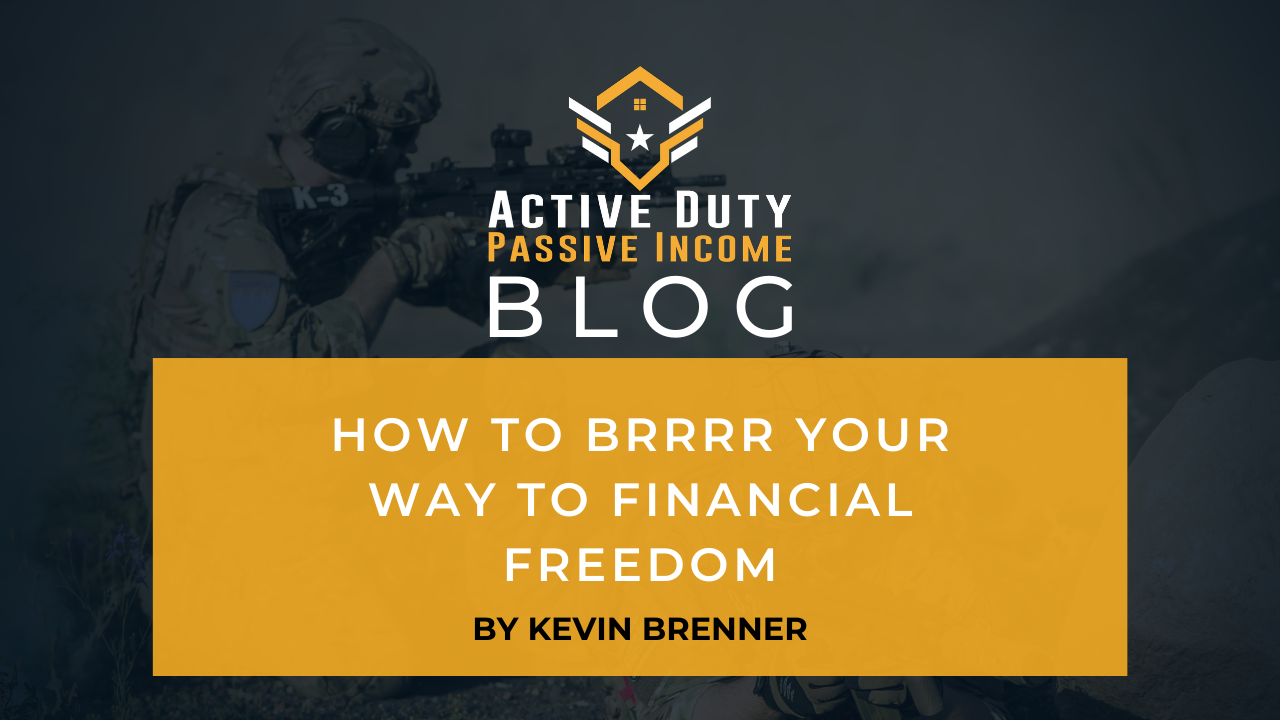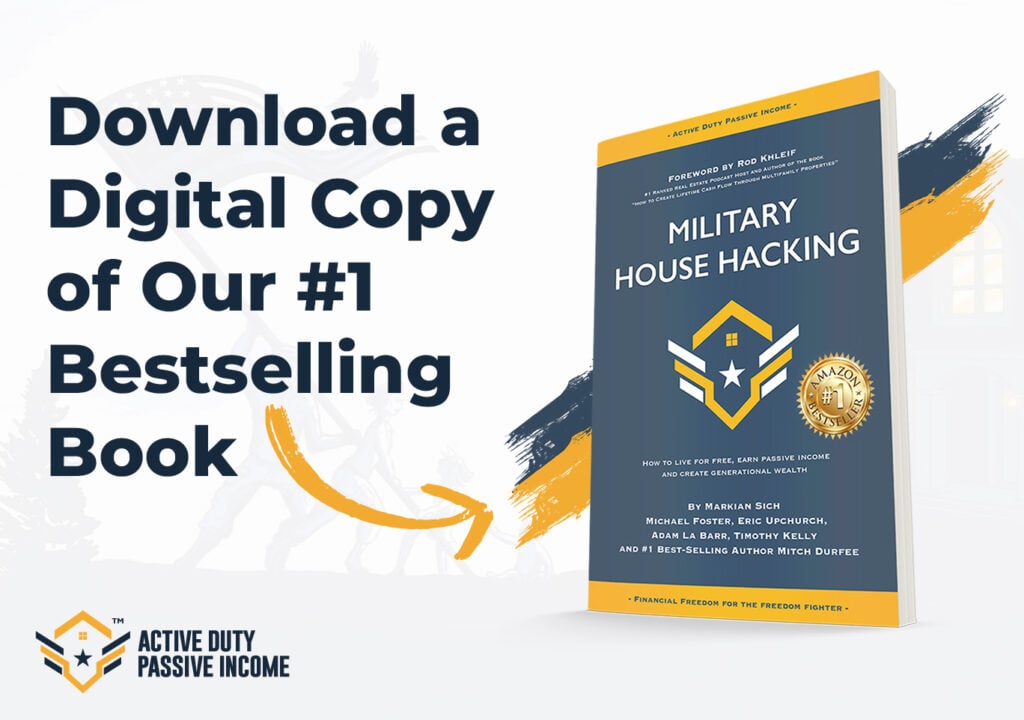Bro, Do You Even BRRRR?
By now I’m sure most of you have heard the term BRRRR which stands for Buy, Rehab, Rent, Refinance, Repeat. Famously coined by BiggerPockets’ Brandon Turner a few years back, the strategy itself has been around forever. Remember, buy low and sell high. It’s kind of like that, except in this case, the end buyer is actually the bank.
How to Get Financial Freedom With Investing?
Investors from all walks of life love to BRRRR because it offers a lot of flexibility, as opposed to standard fix and flip or buy and hold deals, and a significant marketplace competitive advantage (more on this in another blog). Like most real estate investing (REI) strategies, a profitable BRRRR hinges on the After Repair Value (ARV) and your Estimated Rehab Costs (ERC). If you can master evaluating these figures, then you are one step ahead of your competition and well on your way to some solid deals! The topic of calculating ARVs and ERCs is so important it needs its own blog post, website, and maybe college curriculum. I think I’ll start with the blog post, but not now. For now, let’s dig into the basics of the BRRRR and how to master it in order to build out your rental portfolio!

BUY
It’s pretty obvious that in order to be a successful investor of literally anything at all, you need to figure out how to buy something, specifically how to buy it right. In REI, we buy…you guessed it, Real Estate! So you are in the market for a new deal and you are thinking about implementing the BRRRR strategy – what should you look for?
Remember the crux of a successful BRRRR lies within the ARV (or After Repair Value). When evaluating deals, you should be asking yourself, “What’s my ARV? Is there enough room in the ARV to cash out a minimum 75% Loan to Value (LTV) with a bank after all rehab and residual debt service is paid off?” Traditionally, BRRRR deals are used with cash purchases of single family residences (SFRs). As an investor you put down the cash to purchase a home outright. You then rehab the property thus forcing appreciation and resetting your Capital Expense (CapEx) clock.
After that you find a tenant and rent the property out for cash flow while you enter your “seasoning” period with the bank. Finally, you refinance and pull your residual cash out to use on another BRRRR project. When it’s all said and done, you are left with a beautiful home that is tenant occupied and still cash flowing – even after your refinance! Hold onto that sucker for 10, 15, hell maybe even 30 years and ride the cash flow wave all the way to the bank! But wait folks…there’s more.
What if you wanted to apply the same BRRRR strategy described above to buy a small Multifamily (MFH) property? Because you are a savvy military investor you already know you can use your VA to purchase up to 4 units. So what’s stopping you from BRRRRing that 4 unit and multiplying your cash out refinance profits by 4 – absolutely N-O-T-H-I-N-G! Oh did I mention the cash flow from a 4 unit is much better than an SFR? Well it is, even after you refinance, you could still be looking at $200-$300 positive cash flow…per door! This all depends on finding the right deal and buying it intentionally at the right price of course.
REHAB
I already touched on the importance of ERCs early in this blog. I cannot overstate how important these figures are. They can literally make or break your deal. Below are some tips to help you come up with a more accurate ERC:
1). Walk Each and Every Door
Once you have the property wrapped up under contract, make sure you are doing your Due Diligence. Walk each unit with your contractor, handyman, and property manager. Having a great team of professionals is a must! If the seller won’t let you in, it’s probably because they don’t want you to see it. Demand that you see each and every unit before your Due Diligence period ends. If you are approaching the end, ask your agent to coordinate a Due Diligence extension with the Seller. If they refuse, then assume that there is a major problem with that unit that could completely throw off your numbers. Walk away and be happy that you dodged that landmine.
2). Create an SOW and Get Some Quotes!
Most newbie investors skip the necessary step of creating a Statement of Work (SOW) while calculating their ERC for a project. A lot of contractors will walk through a unit, write some things down, point some other things out, and then mumble to themselves while they try to come up with their version of math in public aka contractor math. For the record, contractor math is always skewed high. Very high.
Do yourself, and probably your contractor (unless you are working with Will Hunting from Good Will Hunting) a favor and draw up a legit SOW. I have an excel form that I share with my contractor and my property manager when they walk a unit. My manager and contractor fill in things that they noticed during the walk through that need to be addressed. I have them work together on this because while my contractor may want to fix every little thing, I am only interested in fixing things that will draw in steady working class tenants (aka no gold plated toilets in my units). The SOW is automatically saved and uploaded to my cloud. I verify the fixes with my property manager and negotiate labor prices with my contractor. Then I begin to order the materials. Because I have a few rehabs under my belt, I have a decent idea of what things in my market costs (both material and labor). This helps prevent any contractor math from screwing with my overall numbers.
3). Add in a 10% Contingency Reserve
Forrest Gump said it best, “Shit Happens.” Well that same principle applies to rehabs. As an investor, you have to be prepared to foot the bill for any unintended expenses. Once you complete your SOW and have a solid idea of what your ERC for the project is going to be, do yourself a favor and tack on an additional 10% contingency reserve. This 10% will help cover the costs of some unexpected work that needs to be accomplished. For example, the plumbing under the kitchen sinks in my quadplex was pretty much dry rotted through. I had no idea until we started tearing out cabinets and replacing sinks. Well as you can imagine, we sprung a leak and had to get an emergency plumber out to the site ASAP. Not cheap. Also, not accounted for in my initial rehab budget – Ouch! Luckily it didn’t kill the deal, but you better believe that I learned pretty quick that I need to be making legitimate SOWs and actively implementing cost control measures to keep these projects on time and on budget.
Once you have your ERC and SOW in place. You are ready to proceed with the deal and begin the rehabbing phase. Remember to also account for delays in construction. This could be due to a myriad of factors – just don’t be surprised if your project isn’t complete on time. Depending on how you are funding your project and your rehab, this could throw a wrench into things (e.g. using expensive hard money to fund your deal). Create an SOW, get some quotes, calculate your ERC, and keep an eye on your holding costs and you should be fine.
RENT
Pretty self-explanatory stuff here. The goal of any investment property is to cash flow. If you are not buying for cash flow then you are buying for appreciation. And if you are buying for appreciation you are not an investor. Instead, my friend, you are a speculator. The sad truth is that speculator’s usually lose their money, especially when they bet on factors that are completely out of their control (aka the real estate market)!
Consult with your Property Manager to calculate an average monthly stabilized rent roll BEFORE closing on your deal. You need to know what you can expect to cash flow each and every month after you place your tenant(s). Look at rental comparisons (aka comps) in your neighborhood to get an idea of what things are going for. Remember, if you rehab your property right, you will have a beautiful rental unit with new low CapEx and a long cash-flowing life. Run your rents a shade below what the market is calling for. If you can get these rents to cash flow decently, then you can position your property for sale (instead of refinancing) by marketing it as an “under-rented” asset. Investors will jump all over that and you will still laugh your way to the bank with a solid post BRRRR profit. Again, you need to consult your Property Manager to get these numbers figured out. Don’t be afraid to reach out to some other investors here too. Especially if you feel like your Property Manager is overestimating rents. It’s always good to get an extra set of eyes on your deal. Besides, what do you care, you have it all wrapped up under contract anyway!
REFINANCE
Now we’ve reached the step that most investors dread. The mostly unnecessary and fully invasive refinance process. Remember that the goal here is to refinance your property at a minimum 75% LTV. That leaves you at least 25% equity in the deal. Some investors will hedge their risk even further by refinancing at a more conservative 60% LTV, leaving 40% equity in their deals. The higher your LTV, the more cash you can pull out of your deal, but the lower your cash flow. The opposite holds true for a lower LTV. Of course, all of this depends on the bank’s appraisal of your property.
I mentioned in the beginning of this article that the success or failure of a BRRRR depends on the ARV. Well this is the step in which that ARV calculation comes to light. During this phase, the bank will order an appraisal for your property. Depending on the property type and lending procedures, the appraiser will utilize various methods to determine the new value of your property. With SFRs and small MFH properties, you can expect the appraiser to use a comps analysis to assign a property value. The bank will then use this value as a basis to lend you money – the more accurate your ARV the better off you will be. Maybe you’ll even hit the jackpot and your newly fixed up and shiney property will appraise higher than your ARV estimate. In this case, don’t get greedy. Stick to your plan and just refinance your property at a lower LTV. It’s always good to have a little more equity in case things go south in the market. Remember, we are investors not speculators. Cash flow is a REQUIREMENT, not a hope, dream, or wish list item. You may be able to get more favorable terms if you choose to refinance with a small community bank who will hold your loan on their books, as opposed to selling it on the secondary market. While calling around to a thousand banks and filling out countless loan applications isn’t my idea of a good time, it’s necessary to complete your exit strategy and advance your rental portfolio.
REPEAT
You’ve cashed out your deal after a successful refinance. You may even have some extra equity in your home…and it’s still cash flowing like a champ! That’s what you want to see with each and every BRRRR project. Now you just hold on to your investment, keep it occupied, and collect that mailbox money! Oh, and take that cash from your first deal and repeat the process with a brand new deal. If done properly, the BRRRR strategy can lead you to consistent passive cash flow over time. Consistent passive cash flow – isn’t it a dreamy phrase. Use the BRRRR strategy with SFRs or MFH properties to build your portfolio, multiply your cash flow, and pick away at your financial freedom goals!

Kevin Brenner is an Active Duty Air Force Captain, ADPI Hero, REIA creator, blogger, and an active multifamily investor. You can reach out to him through the ADPI Facebook group!







